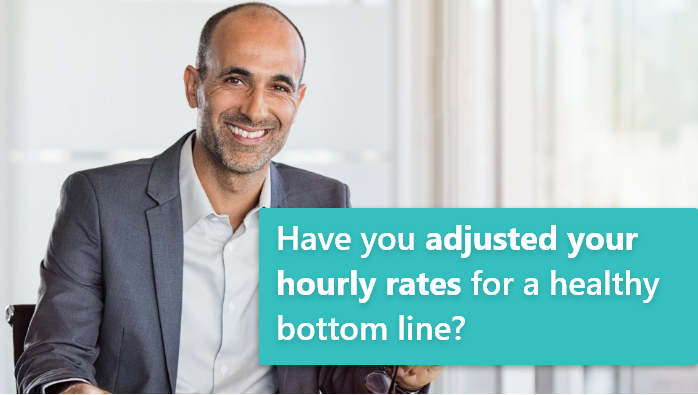How to succesfully implement time tracking in your company
8 min read
You have finally invested in a digital time tracking system and you can't wait to be able to invoice more hours. Or to gain insight into your...
Time tracking
Build your perfect data foundation for spotless invoicing and deep business insights with easy time tracking.
Project management
Be a world champion project manager. Keep your projects on track - and profitable.
Resource management
Efficiently staff projects and run a predictable business with confidence.
Insights & Reporting
Get smarter - faster - to make clever decisions for long-term growth impact.
Project accounting & Invoicing
Invoice everything - fast and accurate - while staying on top of project finances.
Staff & Salary
Give accountants and HR an intelligent tool to eliminate draining administration.
Financial Systems
TimeLog offers standard integrations for all your favourite financial systems. Save time and reduce manual tasks.
Payroll Solutions
TimeLog offers standard integrations for multiple payroll solutions. Get easy salary administration and only enter payroll information once.
Add-ons
Track time automatically via Outlook, use gamification or find another add-on that can support your business.
Multiple Legal Entities
You can create synergy between your departments and across borders and offices with the Multiple Legal Entities module from TimeLog.
Business Intelligence
Utilise the insights you get from TimeLog to the fullest. Our system is ready to integrate with multiple BI solutions.
Partner Integrations
TimeLog PSA is part of a large ecosystem. Get an overview of all the partner integrations in the TimeLog family.
Economy department
Save 1-2 days a month on your invoicing process.
Project teams
From planning to execution and evaluation. Robust tools for every project manager.
Management teams
Create a performance-driven culture with solid reporting capabilities.
Large enterprises
Enhance operations and performance across entities, countries and departments.
NGOs and non-profit organisations
Simplify internal processes, spend less time on administration, and get documentation in place - at a discounted rate.
Blog
Get inspired to run an even better business with articles, guides and analyses.
Guides, podcasts and webinars
Get access to templates, guides and webinars that help and inspire you.
Help Center
Looking for help material and user guides to the TimeLog system? Look no further. Find all the help you need now.
Get a single source of truth
Discover how companies maintain a single source of truth across borders, departments, and currencies.
Get integrated
Discover the advantages customers gain from utilising our integrations and API.
Reporting in real-time
Explore how others leverage reporting to optimise their processes and make informed decisions.
Get started with resource planning
Discover how other companies thoroughly grasp their resources and enhance their ability to predict future trends.
Improved project financials
This is how the efficient financial toolbox from TimeLog helps project managers and CFOs improve their project financials.
Faster invoicing
Discover how other companies have slashed the time spent on invoicing by 75% - and uncover how you can achieve the same efficiency.
The Story of TimeLog
Get insights on TimeLog and how we can help you grow and evolve your business.
Employees
See who shows up every day to deliver the best PSA solution.
Career
What's life like at TimeLog? Are we hiring? Get the answer here.
Partner
Create even more value for your customers, as well as ours, as a TimeLog Partner.
Premium Service
Online Help Center, tailored onboarding and support from Day 1.
Corporate Social Responsibility
We work to ensure a positive impact on planet, people and businesses.
Security and GDPR
Learn more about how we work to keep your data safe and provide maximum security.
6 min read
A Danish study indicates that nudging can be a useful tool for motivating your employees to track time.

How can I motivate my employees to register their hours?
This is probably the question we’ve been asked most often over the 20 years we've been advising companies about time registration.
It’s also the question I aim to answer for you in this post, taking as my starting point one of the popular management tools from the behavioural theory toolbox: nudging.
My post this time centres on two Danish women – Henriette Diernisse and Kathrine Springborg – and their thesis about time registration and how behavioural theory and nudging can encourage more employees to register their hours.
Their thesis is based on register and survey data backed by interviews completed over six months at a Danish company with 600 employees.
I’ve added practical knowledge that we’ve built up progressively since 2001.
Many define a “nudge” as a gentle push in the right direction. Here is the professor’s definition:
A nudge ...is any aspect of the choice architecture that alters people’s behavior in a predictable way without forbidding any options or significantly changing their economic incentives. (...) Nudges are not mandates. Putting fruit at eye level counts as a nudge. Banning junk food does not.”
The concept stems from their 2008 book Nudge, which the international news magazine The Economist named book of the year that same year.

One of the most famous examples of a nudge in the world is the fly in the urinal. This particular nudge was introduced in 1999 at Schiphol Airport, Amsterdam, and entailed simply sticking a reproduction of a small fly in the urinal.
It resulted in up to 80 per cent less “spillage” to the sides of the urinal, to the delight of the cleaning staff and everyone else who had to use the toilet.
In their thesis, Henriette Diernisse and Kathrine Springborg suggest that nudging is a powerful management tool if you, as a manager, are experiencing that:
The advantage of nudging is that it’s an inexpensive management tool that is easy to implement and that you can use in pretty much all contexts where you aim to help your employees make good decisions.
There are significant differences from one person to another with regard to what motivates them to register time. You, therefore, need to understand the behavioural bias that governs your employees to ensure that your nudge will have the desired effect.
Behavioural bias has to do with our propensity to make irrational decisions. In other words, we take mental shortcuts such as omitting essential details and are often motivated by the short-term perspective (thesis on time registration and nudging, 2021).
There are more than 100 behavioural biases, but which ones have an impact in the context of time registration? In their thesis, Henriette and Kathrine argue that “the present bias” in particular, can affect time registration by your employees.
“Present bias” is another way of saying that an individual prioritises the present over the future. For example, your employees may have a tendency to say, “I just need to go through my mail—I’ll get to my time registration later.”
If your employees are subject to present bias, you can use continuous time registration as a nudge to encourage them to register their hours.
You can register time in several ways. Some companies have regulations stating that it has to be done every month, while others register weekly. We do it daily—before or after meetings, for example, or while the customer is on the phone.
In our thesis, we discovered that the employees who were best at registering their time were the ones who did it daily, as it wasn’t such a daunting task for them.
One of the benefits of constant time registration is that it eliminates duplicated work. In our experience, many people habitually record their hours on paper and then register them in whatever system they use later.
Another advantage of continuous time registration is that it prevents your employees from finding themselves in the following situation: It’s 4 p.m. on a Friday, and they suddenly have to remember all the work they’ve done over the past week. Hand on heart, I can barely remember what I was doing at 2.30 yesterday. How about you?
If continuous time registration fails to motivate your employees to register their hours, you could consider giving them shorter periods for time registration. For example, you can ask them to register daily or weekly.
This can be a good nudge because they are then required to register time for shorter intervals, which makes the whole process seem more manageable. 
To motivate your employees to register their time, you must make it as easy as possible.

One of Henriette´s and Kathrine´s thesis findings is that some employees fail to register their time because they think the process is too complicated and overwhelming.
It is essential to focus on simplicity regarding:
If too many tasks are linked to a project, your employees will quickly lose their overview regarding registering time. It would help if you also considered whether requiring your employees to link comments to their time registrations is indispensable.
By keeping your time process simple, you add structure to complex choices for your employees - and this is precisely what a good nudge should do ( Danish thesis on time registration and nudging, 2021).
How user-friendly is the time registration system you already use or are thinking of using
In your hunt, you can use our “5 things you should ask about” guide for a user-friendly time registration system.
In their thesis, Henriette Diernisse and Kathrine Springborg examined why employees forget to register their time.
One reason is that they do not understand the purpose of time registration.
So, how can you use nudging to help your employees understand that purpose?
Framing is a specific tool you can use as a nudge. Briefly put, “framing” has to do with the way you present your message.
For example, you can highlight the positive aspects of time registration. This can be effective because people tend to choose options with positive framing.
Some employees may think that time registration is for control and monitoring. By using framing, you may be able to limit or even change this perception and help your employees understand that time registration makes a positive contribution.
Time registrations can document a high level of activity at a company and thus contribute to the management focusing on the imbalance between resources and workload.
As a manager, you can use framing to discuss the benefits of time registration for your company.
Our experience indicates that it is not unusual for a company:
Many employees also understand the importance of time registration from the company's perspective, and self-interest is another key motivator.
Remember that some people may view time registration as monitoring. Therefore, it is essential that you, as a manager, help your employees understand the personal outcome of their time registrations.
Alignment with expectations: An excellent place to start is to ensure a good alignment. Here, you clarify what you, as a manager, plan to do with your employees’ time registrations. For example, you can explain that the objective is to remove friction—in one form or another—from their everyday work.
The employee appraisal interview: You can also use your employees’ time registrations for their employee appraisal interviews and pay negotiations.
Flexitime scheme: If any of your employees are on flexitime schemes, this should encourage time registration because timely registrations can translate into time off.
As a manager, you should take the lead and establish good habits and a healthy culture regarding time registration. In their thesis, Henriette and Kathrine put forward three convenient suggestions for what you can do:
If you don’t already have a time registration system, look for systems incorporating nudging features on the market.

8 min read
You have finally invested in a digital time tracking system and you can't wait to be able to invoice more hours. Or to gain insight into your...

6 min read
What is the problem with receiving personal information via e-mail? Before the new GDPR rules took effect on 25 May 2018, it was common...

3 min read
We have recently talked about some of the biggest mistakes of project management, and one of them was inefficient invoicing management. For companies...

5 min read
Is manual bookkeeping putting a strain on your time and resources? There may be more efficient ways to divide those assets to support your...

2 min read
The consultants of a consultancy firm are the engines that keep the business running – and as such, the very core of the firm’s activities and...

5 min read
Consultancies typically work for numerous clients either on a retainer, fixed price project, or time and material, invoicing the clients for...

5 min read
Do you throw away revenue and profit to inflation because you don't index your hourly rates? We all know the feeling that everything was...

8 min read
When did you last consider what fundamentally constitutes your company? During a networking event recently, I did an experiment where I asked...

8 min read
In a professional services organisation, hours and projects are the basis for customer invoicing rather than manufacturing or goods. ...